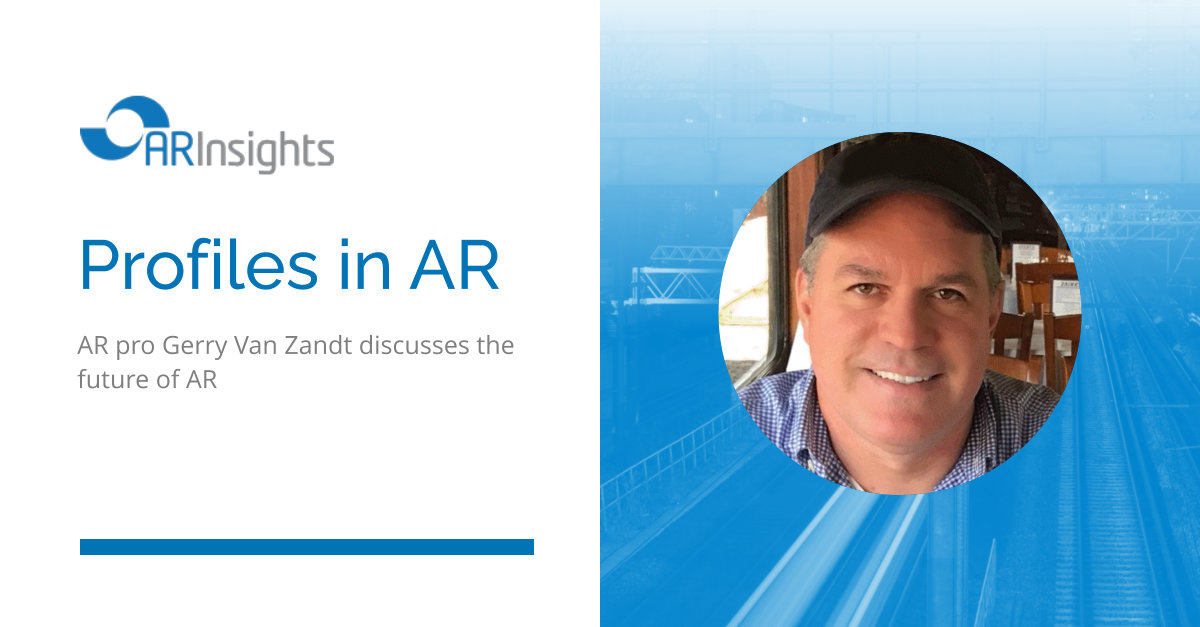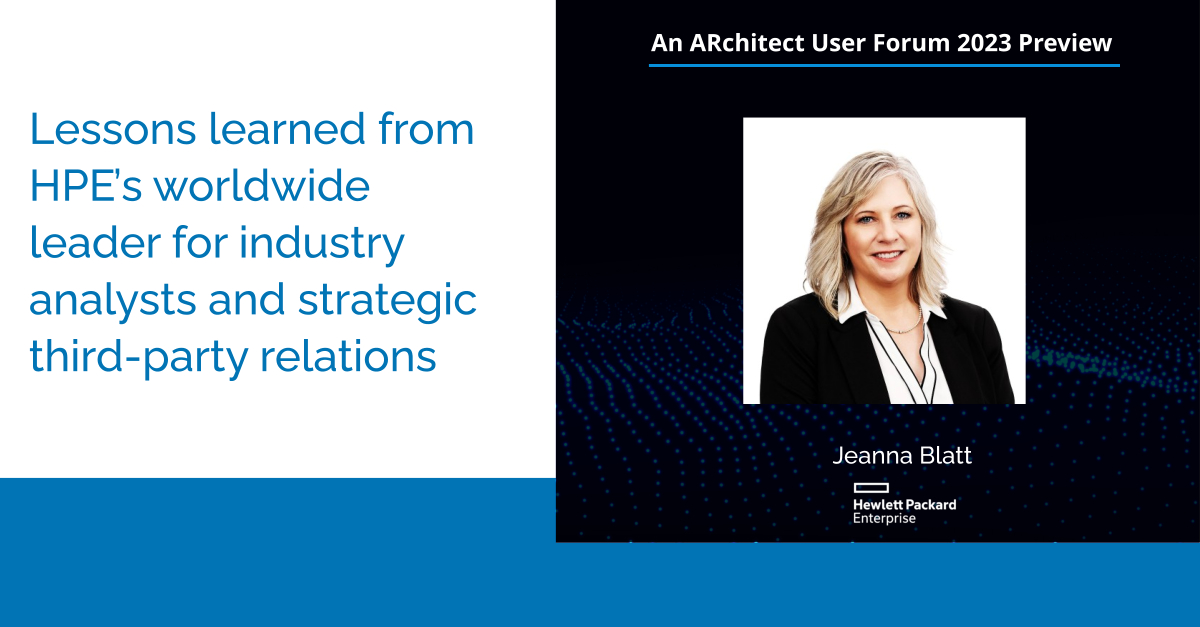We’re back with Part II of “Profiles in AR” with Gerry Van Zandt of Alteryx. If you missed Part I, check it out here – it’s a fascinating take on analyst relations (AR) in small team and one-person environments, compared to AR with large teams.
Based on his nearly three decades of AR experience, Gerry shares more great insights on the nature of the field and where it’s headed. The rest of our conversation with him is below.
Q: If you had to describe AR in three words, what would they be?
Gerry: “Diverse.” “Challenging.” “Strategic.” And, as a bonus, one — functioning like a “matchmaker.”
The last word, in particular, is the crux of my role. I know our internal audiences, I know our business goals and I know what our teams are trying to do. And then I know the analysts — their personalities, what they’re thinking, what their objectives are, who they’re talking to and what they’re writing about.
So I strive to make and foster important relationships, and be a conduit — both inside and outside the company. I represent our company to the analysts, and represent the analysts to our company as well.
Q: Can you share some AR tips with us? What’s your best advice for ensuring analyst briefings go smoothly?
Gerry: I’d recommend four things:
First, brief the analyst as far ahead of the product announcement (or whatever you’re briefing them on) as you can. Three to six months is good; more than six months is great.
You should also consider using a trusted analyst or two as a sounding board even before the briefing phase — to run messaging, pricing or other concepts by them, and get their opinion. Include trusted analysts in the making of the bread dough, not just as a recipient of the finished, baked loaf.
Second, prepare your spokespeople and executives ahead of time, especially if they don’t know the analysts and haven’t interacted with them before. Different people have different comfort levels with analysts, so tailor your preparation to their needs and desires.
Third, you should add value by communicating with your spokesperson during the briefing using chat — to coach them in real time, ensure they emphasize certain points, and give them feedback on how you think the analyst is feeling, based on your relationship and knowledge of the analyst’s personality.
And last, follow up after the briefing with a quick inquiry to get the analyst’s impression and insights, also seeing whether any questions or concerns resulted from the briefing. Feed this back into your plan for the next interaction or follow-up. As AR people (and I am guilty of this myself), we don’t do this last step enough — but it is important!!
Q: What are some of your AR accomplishments that you’re most proud of?
Gerry: A few things that come to mind. One was early in my career: overseeing AR and PR communications for the launch of Pandesic, the e-commerce start-up and SAP-Intel joint venture. I worked a year on that launch, heading up a small comms team. I was at a PR agency at the time, and my work led to a job offer from Intel: my first full-time AR job, back in 1997.
I’m also proud to say I was an early pioneer in the use of social media as a tool for analyst relations — starting back when I joined HP in 2008. I taught a lot of classes to my HP AR and PR colleagues at the time about how to use social media effectively for their communications.
Also, I’m probably the only AR person out there who has, AR-wise, launched two major vendors’ public clouds: HP Helion in 2014 and then a couple years later, Oracle Cloud Infrastructure — which is still going strong today!
To prepare for the Oracle Cloud launch, I brought six analysts in for periodic strategic consultations starting a year in advance: four from Gartner and two from Forrester. We did multiple advisory days and kept in very close contact with them — on an ongoing basis, up to and after launch. We shared the company’s approach and vision with them, and they gave us valuable information, insights into messaging and technical suggestions for what Oracle should prioritize.
Then, what was particularly exciting was that only two months after launching Oracle Cloud in late 2016, Gartner invited us to participate in the industry’s Magic Quadrant. Keep in mind, since Oracle Cloud had just launched, it was a fairly bare-bones product at that point. And we ended up debuting as a very solid visionary in the crowded and competitive MQ — which was quite an achievement. This was based, in part, on the credibility the executives had established working with Gartner for a full year before launch. The analysts bought into the vision and saw where Oracle planned to go from a technical perspective.
Lastly and most recently, since joining Alteryx, I’m proud of — and have enjoyed — working with the analyst community to communicate our company’s transition to a cloud-based analytics platform provider, and launching our portfolio of cloud-based analytics software earlier this year.
Q: You’ve done AR both at PR agencies and in-house. What differences do you observe in the approaches? How can AR and PR teams best work together?
Gerry: I’ve worked at three different PR agencies — two large, one small — where I’ve done AR. Although there’s some overlap in PR and AR skillsets, I’ve found over the years that many PR people tasked with AR tend to approach it with a PR mentality. There’s a tendency to treat analysts like reporters and editors, and conduct AR with very transactional interactions.
The reality, though, is that properly structured and managed analyst relationships are very different than ones with the press. And so rather than jump quickly from one reporter and one article to the next, the AR role requires stability and a long-term relationship mentality. It also requires a deep understanding of how analysts work, and how they interact with customers, investors, competitors and other market participants.
And as an AR professional, you should have a deep level of technical curiosity and knowledge, born out of direct engagement with the product teams, exposure to the product and knowledge of the technology that underpins things. Since in-house AR people have that visibility, AR is often well-executed through in-house roles: separately, though in partnership with PR. And in partnering with PR, no question there are great synergies that to be had. Plus, many AR people have PR backgrounds, so they know how the PR ecosystem works.
That’s not to say AR can’t be successfully executed by a PR agency, if you have the right people. For instance, Microsoft with its agency WE Communications — they’re an example of a PR agency that has done AR for decades.
In addition, an interesting phenomenon has popped up over the last 10 or 12 years: the AR agency. These are typically run by seasoned AR people, who have analyst relationships spanning 10, 15, 20 years. Because the founders typically come from the corporate AR world, they have domain expertise and history under their belts. If you’re looking to enlist an agency for AR assistance, I think an AR-specific agency can really be a good way to go.
Q: What major changes have you seen in analyst relations over the course of your career?
Gerry: I’ve seen a lot of changes! First, there are a lot more analysts and a “long tail” of a lot more analyst firms today.
Second, and sadly to some degree, we’ve seen the consolidation of the analyst industry and the disappearance of some really great firms back in the day: like META Group, Giga Information Group, Burton Group, Yankee Group, Jupiter, AMR and others. This has reduced the number of truly influential customer-advisory-type firms and created a more lopsided playing field, with Gartner being by far the largest and most comprehensive analyst firm. I think that the old model of more competition among analyst firms, which were more evenly matched in size and expertise, was a good thing!
I’ve also observed that analyst research, in general, has gotten more transparent, orchestrated and rigid, and yet less subjective — with a stricter methodology applied, and more peer reviews and fact-checking. Compare that to 20 years ago, when analyst research was often largely a reflection of analysts’ opinion.
Analysts today are also busier than ever. At some firms, they’re being employed more and more as advisers and taking ever more inquiries from end-users. Even though more vendors are banging on their doors, analysts have less time for them, and less time to attend vendor events. It’s getting more difficult to have informal and effective vendor interactions — which means you need to plan in advance and be strategic. The pandemic didn’t help this for the past two years.
And then there are other trends that have changed how we do AR over the last couple decades: the explosion of social media; the advent of what I call “blogalysts” (expert bloggers and influencers who analyze industry happenings, often former analysts); and the rise of peer reviews as a credible research input adopted by several of the top firms. So there’s certainly been a sea change in the field, and it continues to evolve.
Q: Where do you see AR headed in the years to come?
Gerry: Analyst relations is turning into more of an influencer relations field. AR pros have more (and more diverse) audiences to work with and engage.
It’s interesting too; 20 or 30 years ago, analyst relations was very much a niche discipline. There were maybe a few hundred people worldwide who did it. Now there are thousands of people, and that’s growing. I think AR will continue to mature as a more strategic and desirable discipline and continue to diverge from the PR, social media and communications functions. The value of AR pros will continue to be based on the currency of their analyst relationships, experience in managing analyst research strategically and ability to map AR to support their firms’ business priorities.
And I think the field will continue to grow. There’s been an increasing realization among executives over the last 10-to-15 years that analysts exert a lot of influence on buying decisions.
So more and more companies see analysts as an audience that needs to be addressed, that’s critical to their success. This has elevated the importance of analyst relations, which is reflected in the increasing number of AR jobs and the increased salaries companies pay for experienced AR talent.
Yet, even with all that said, I worry about analyst relations. I think the AR discipline has matured to the point where it has come into its own. Many of today’s AR leaders “fell into” AR from other fields and disciplines, often while well into their careers. But I would like to see AR become a discipline that more people opt into at the beginning of or early in their careers, and are able to grow in their careers with. As the AR field matures and new types of skills become needed, making and keeping the field attractive is a challenge that I want to work on in the coming years.
However the analyst relations field evolves in the future, one thing that will never change is the “relations” piece. The ability to form, nurture and maintain productive relationships with analysts and influencers through honesty, integrity and genuine curiosity are values that will always hold AR professionals in good stead.
Q: Who else would you recommend we reach out to for this series?
Gerry: I highly recommend Sandy Leong of HPE. Sandy has been doing AR longer than just about anyone in the industry, and she exudes a quiet, competent professionalism born of her wealth of knowledge and experience. Sandy is a role model for the AR professionals who have worked with her.
Steven Armstrong, who runs AR at Amazon Web Services, would also be excellent. Over the past 10+ years, Steven has built an amazing AR team at Amazon that bleeds Amazon’s corporate values. There is some serious AR innovation happening at AWS that I believe will render many long-held AR canons and practices obsolete.
***
Many thanks to Gerry for his time and insights. If you want to connect with Gerry, you can reach him on LinkedIn.
And stay tuned for more interviews in our Profiles in AR series!




